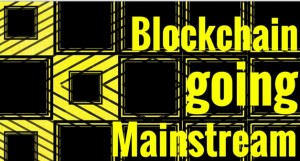Blockchain technology may well be what remains of bitcoin technology. At a conference sponsored by the New Yorker earlier this fall, all the participants agreed that bitcoin as an alternate currency had a questionable future. Yet the blockchain technology that releases bitcoins into the market may work well for credit card companies and online banking.
Nine of the world’s biggest banks have thrown their weight behind blockchain,
Barclays, BBVA, Commonwealth Bank of Australia, Credit Suisse, JPMorgan, State Street, Royal Bank of Scotland, and UBS have all formed a partnership to draw up industry standards and protocols for using the blockchain in banking.
The partnership is being led by R3, a startup with offices in New York and London headed by David Rutter, the former CEO of ICAP Electronic Broking and a 32-year veteran of Wall Street.
Rutter’s plan is to build the “fabric” of blockchain technology for banking, as well as develop commercial applications for banks and financial firms.
The blockchain is the software that both powers and regulates cryptocurrency bitcoin. In its most basic form, it records ownership of bitcoin — money — and transactions — one person paying another.
Transactions are signed off by the parties involved using the software, then added to the blockchain, a long string of code that records all activity.
Once other transactions are added on in front of an exchange, the transaction is stuck there forever and can’t be changed, in the same way you can’t change a brick once it’s been built into a wall.
The software cuts out the need for a “trusted middleman” to sit in between parties in a transaction as it acts as that middleman. This makes transactions quicker, cheaper, and easier when compared to the current systems banks use.
Banks are therefore keen to see if it can be adapted for use with traditional currency, rather than just bitcoin.
The blockchain uses open ledger technology, meaning all of these transactions are free for anyone to look at and not stashed in some private data centre in Canary Wharf. Anyone can theoretically check to see if someone’s using stolen bitcoin and this adds a level of transparency to the system.
Rutter says R3 has drawn up a “wish list” of what its banking partners want to use blockchain technology for, which covers “everything from issuance, to clearing and settlement and smart contracts, where the code is the contract and it saves on back office costs.”
As part of the partnership, banks are investing in R3. Rutter said: “I can’t reveal that but it’s been reported that it’s several million. From my prospective of having the banks involved, the human element is more valuable.”

